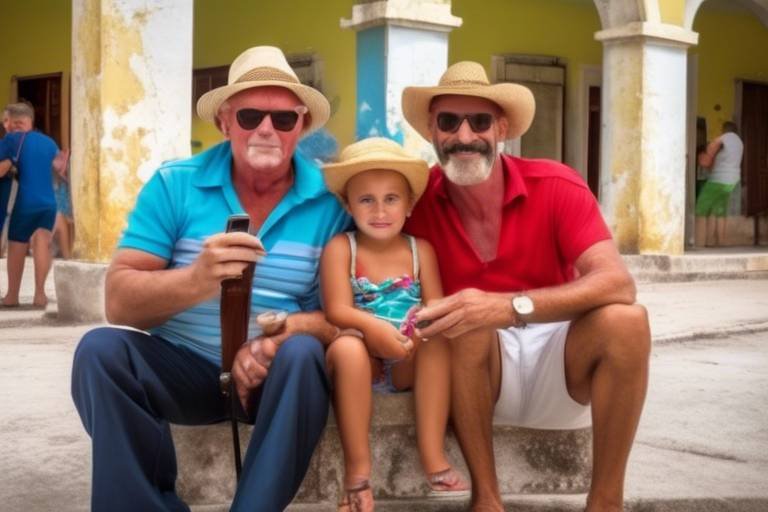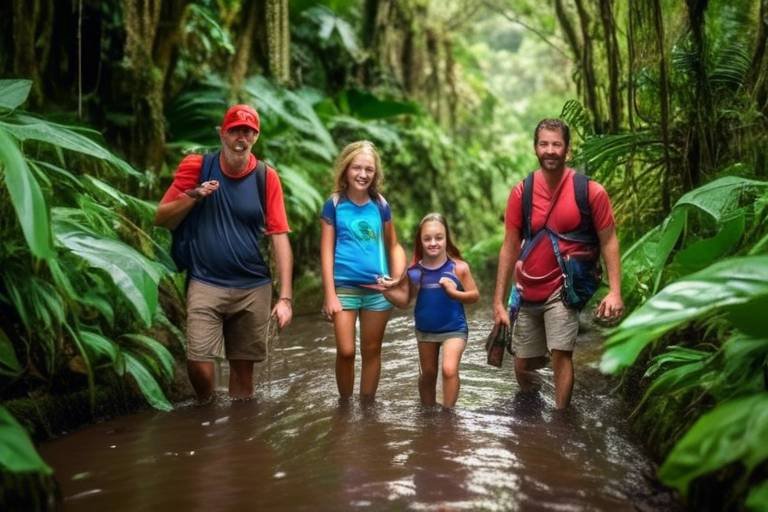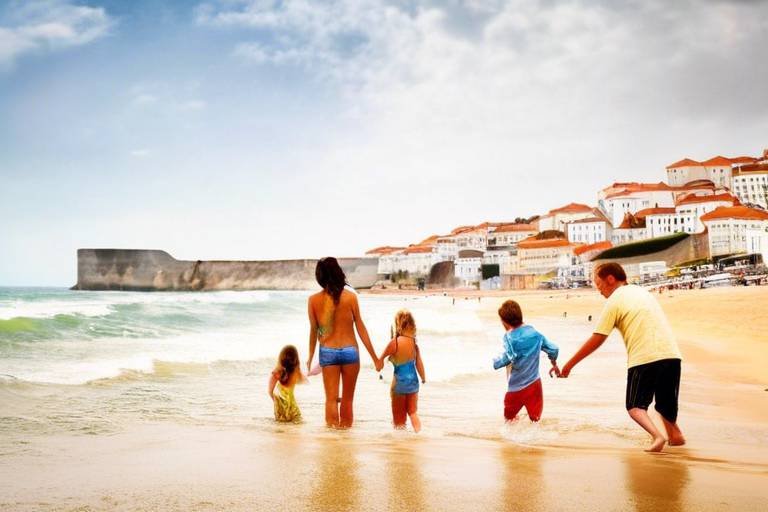Fun Family Adventures in India's Wilderness
Are you ready to embark on an unforgettable journey through the stunning landscapes of India? Fun family adventures await you in the heart of nature, where every twist and turn brings a new thrill. Imagine a place where the air is fresh, the scenery is breathtaking, and the experiences are nothing short of exhilarating. From the lush forests of national parks to the towering peaks of the Himalayas, India's wilderness offers a plethora of activities that cater to families seeking both adventure and bonding time.
Picture this: You're on a wildlife safari, surrounded by the sounds of nature, as you spot a majestic tiger lounging in the shade or a herd of elephants gracefully roaming by. These moments not only bring excitement but also teach valuable lessons about conservation and biodiversity. It's an opportunity for families to connect with wildlife and understand the importance of preserving our planet for future generations.
But the adventure doesn't stop there! Have you ever thought about trekking through the majestic Himalayas? The thrill of hiking along scenic trails while sharing laughter and stories with your loved ones is an experience like no other. Whether you're seasoned trekkers or just starting, there's a trail for everyone. From gentle walks to challenging hikes, the Himalayas promise stunning views that will leave your family in awe.
As you plan your adventure, you'll want to choose the right trail. Consider factors like difficulty, duration, and the kind of scenery you wish to enjoy. This ensures that every family member, from the youngest to the oldest, can have a fulfilling experience. And don’t forget to pack the essentials! Proper gear, hydration, and pacing are key to a successful trek. Remember, it's not just about reaching the summit; it's about the journey and the memories you create along the way.
For those who prefer a little extra guidance, opting for a guided trek can be a great choice. Experienced leaders can enhance your adventure with local knowledge and ensure safety. However, if your family is up for it, self-guided treks offer the freedom to explore at your own pace, allowing for spontaneous detours and discoveries.
After a day of trekking, what better way to unwind than by camping under the stars? Camping in India's wilderness allows families to connect with nature on a deeper level. Imagine gathering around a campfire, sharing stories, roasting marshmallows, and gazing up at a sky filled with stars. It's a chance to unplug from the hustle and bustle of daily life and immerse yourselves in the beauty of the natural world.
And let's not forget the thrill of river rafting! The adrenaline rush of navigating through rapids while surrounded by stunning landscapes is an experience that will get your heart racing. Whether you're a novice or an experienced rafter, there are rivers suitable for every skill level. It's a fantastic way for families to bond and create lasting memories as they tackle the challenges of the river together.
Of course, safety is paramount when it comes to rafting. Understanding the necessary precautions, such as wearing life jackets, checking weather conditions, and knowing emergency protocols, is crucial for a fun and safe experience. Additionally, selecting the right river is essential. Families should assess the river's difficulty level and their own experience to ensure a thrilling yet safe outing.
In conclusion, India's wilderness is a treasure trove of adventure waiting to be explored. From wildlife safaris to trekking in the Himalayas and thrilling river rafting, the opportunities for family bonding are endless. So pack your bags, gather your loved ones, and get ready for a journey filled with laughter, learning, and unforgettable moments!
- What is the best time to go on a wildlife safari in India? The best time to visit is during the winter months, from October to March, when the weather is pleasant and wildlife sightings are more frequent.
- Are there trekking trails suitable for children? Yes! There are numerous family-friendly trekking trails in the Himalayas that cater to all age groups and skill levels.
- What should I pack for a camping trip in the wilderness? Essential items include a tent, sleeping bags, cooking gear, food, water, first-aid supplies, and warm clothing.
- Is river rafting safe for families? Yes, as long as safety precautions are followed and the right river is chosen based on the family's experience level.

Wildlife Safaris
Imagine driving through a vast expanse of lush greenery, the air filled with the sounds of chirping birds and rustling leaves. Wildlife safaris in India offer families an exhilarating opportunity to experience nature up close and personal. From the majestic Bengal tiger prowling through the tall grass of Ranthambore National Park to the playful elephants splashing in the rivers of Jim Corbett National Park, every safari is a unique adventure that can spark a child's curiosity and ignite a passion for wildlife conservation.
As you embark on these thrilling journeys, you not only get to witness these magnificent creatures in their natural habitats but also learn about the importance of biodiversity and conservation efforts. Many national parks in India, such as Bandhavgarh and Kanha, provide guided tours where knowledgeable rangers share fascinating insights about the animals and their ecosystems. This educational aspect makes the experience all the more enriching for families, allowing children to grasp the critical role that wildlife plays in our environment.
While planning your safari, it’s essential to consider a few key factors to ensure a memorable experience:
- Timing: The best time for wildlife safaris is typically during the dry season, when animals are more likely to congregate around water sources.
- Preparation: Equip yourself with binoculars, a good camera, and a field guide to enhance your wildlife spotting experience.
- Respect for Nature: Teach your children the importance of maintaining a safe distance from wildlife and respecting their habitats.
Moreover, many parks offer family-friendly safari options, including jeep safaris and walking safaris, which can be tailored to suit different age groups and fitness levels. This flexibility allows families to choose an adventure that best fits their dynamics. Imagine the thrill of spotting a leopard lounging on a branch or a herd of deer grazing peacefully. These moments create lifelong memories, stories to share, and a deeper appreciation for the natural world.
In addition to the wildlife, the landscapes themselves are breathtaking. From the arid deserts of Rajasthan to the dense forests of Uttarakhand, each national park presents a unique backdrop that adds to the adventure. As families traverse these diverse terrains, they can engage in discussions about the various ecosystems and the importance of preserving them for future generations.
In conclusion, a wildlife safari in India is more than just spotting animals; it's about creating cherished family memories while fostering a love for nature and conservation. So, pack your bags, grab your loved ones, and get ready for an adventure that promises excitement, education, and unforgettable moments!
1. What is the best time to go on a wildlife safari in India?
The best time for wildlife safaris is generally from October to June, with the dry season providing better visibility of animals.
2. Are wildlife safaris safe for children?
Yes, wildlife safaris are safe for children when conducted with reputable guides who prioritize safety and follow park regulations.
3. What should we wear for a wildlife safari?
Wear comfortable, neutral-colored clothing that blends with the environment, along with sturdy shoes for walking.
4. Can we take our own vehicle on a safari?
Most national parks have specific rules regarding vehicle entry; it's best to check the park's regulations beforehand.
5. Are there any restrictions on photography?
Generally, photography is allowed, but flash photography and disturbing the wildlife are prohibited. Always check the guidelines of the park.

Trekking in the Himalayas
Trekking in the majestic Himalayas is not just an adventure; it's a journey that binds families together in the heart of nature. Picture this: you and your loved ones, surrounded by towering peaks, lush valleys, and the crisp mountain air filling your lungs. It’s an experience that ignites the spirit of exploration and fosters a sense of togetherness. Whether you’re seasoned trekkers or first-timers, the Himalayas offer trails for every skill level, making it an ideal destination for family bonding.
Imagine the thrill of reaching a breathtaking viewpoint after a challenging trek. The stunning vistas of snow-capped mountains and serene landscapes are rewards that make every step worthwhile. Families can share stories, laughter, and even the occasional struggle as they navigate the trails together. It’s about creating memories that will last a lifetime, where every twist and turn of the trail brings a new adventure.
When planning your Himalayan trek, selecting the right trail is crucial for ensuring everyone has a great time. Factors like difficulty, duration, and scenic beauty should be considered. For instance, if you have younger children or elderly family members, opting for a shorter, less strenuous trail can lead to a more enjoyable experience. Trails like Chopta-Tungnath or Deoria Tal offer moderate challenges with stunning views, making them perfect for families. On the other hand, if your family is up for a challenge, the Valley of Flowers or the Hampta Pass can provide a thrilling adventure with rewarding landscapes.
To ensure your trek is smooth and enjoyable, here are some essential tips for families:
- Proper Gear: Invest in good-quality trekking shoes and weather-appropriate clothing. Comfort is key!
- Hydration: Always carry enough water. Staying hydrated is crucial, especially at higher altitudes.
- Pacing: Take your time. Enjoy the journey and don’t rush; it’s about the experience, not just the destination.
These tips not only help in making the trek safe but also encourage teamwork and resilience among family members. Each step taken together strengthens the bond, making it a truly unforgettable experience.
One important decision is whether to embark on a guided trek or go for a self-guided adventure. Guided treks come with the advantage of local expertise, ensuring you don’t miss out on hidden gems and cultural insights along the way. Experienced guides can also enhance safety and provide valuable information about the flora and fauna. However, if your family values freedom and spontaneity, a self-guided trek might be more appealing. Just ensure you have a good map and some trekking experience under your belt!
1. What is the best time to trek in the Himalayas?
The best time to trek in the Himalayas is typically from March to June and September to November. During these months, the weather is generally mild and the trails are clear.
2. Do we need special permits for trekking?
Yes, certain trekking routes in the Himalayas require permits. It’s essential to check the requirements for your chosen trail ahead of time.
3. Can children participate in Himalayan treks?
Absolutely! Many trails are family-friendly, but it's essential to choose a route that matches your children's fitness levels and capabilities.
4. What should we pack for a trek?
Pack essential items like trekking shoes, warm clothing, a first-aid kit, water bottles, snacks, and a camera to capture memories!
Embarking on a trek in the Himalayas is more than just a physical journey; it's an opportunity to connect with nature and each other in a way that few other experiences can provide. So lace up those boots, grab your family, and get ready for an adventure that will leave you all breathless—in the best way possible!

Choosing the Right Trail
When it comes to trekking in the majestic Himalayas, selecting the right trail is absolutely essential for ensuring that your family has an unforgettable adventure. Imagine standing at the foot of towering peaks, with the crisp mountain air filling your lungs and the thrill of exploration tingling in your fingertips. But how do you find that perfect path that suits everyone's abilities and interests? Well, let’s break it down!
First and foremost, consider the difficulty level of the trails. Not every family member may be an experienced hiker, and it’s crucial to choose a trail that accommodates varying skill levels. Look for trails that offer a mix of easy, moderate, and challenging segments, allowing everyone to participate without feeling overwhelmed. For instance, if you have young children or older family members, opt for trails that are mostly flat and well-marked.
Next up is the duration of the trek. Some families may be ready to tackle a multi-day expedition, while others might prefer a shorter day hike. It’s important to gauge your family’s stamina and interest. A trek that lasts too long can lead to fatigue and frustration, while a shorter trek might leave you wanting more. Think about how much time you have and what everyone is comfortable with. A great way to start is with a half-day trek to get everyone acclimated to the environment and the activity.
Another vital factor is scenic beauty. After all, the Himalayas are known for their breathtaking landscapes! Choose trails that offer stunning views of snow-capped peaks, lush valleys, and vibrant flora and fauna. Not only will this enhance your trekking experience, but it will also provide fantastic opportunities for family photos that you'll cherish forever. Researching trails online or consulting with local guides can help you find those hidden gems that are less crowded but equally beautiful.
To give you a clearer idea, here’s a quick comparison of some popular family-friendly trekking trails in the Himalayas:
| Trail Name | Difficulty Level | Duration | Scenic Highlights |
|---|---|---|---|
| Triund Trek | Easy | 1 Day | Panoramic views of Dhauladhar range |
| Chopta Tungnath Trek | Moderate | 2 Days | Beautiful meadows and ancient temples |
| Stok Kangri Trek | Challenging | 5 Days | Stunning views of Ladakh and the Zanskar Range |
Lastly, don’t forget to consider the season in which you plan to trek. The weather can be unpredictable in the mountains, and certain trails may be inaccessible during the monsoon or winter months. Researching the best times to visit can save you from unexpected challenges and ensure a more enjoyable experience.
In conclusion, choosing the right trail is about balancing adventure with safety and enjoyment. Take the time to discuss options with your family, consider their preferences and abilities, and don’t hesitate to seek advice from experienced trekkers or guides. After all, the goal is to create cherished memories together, surrounded by the breathtaking beauty of nature!
- What should I pack for a family trekking trip? Ensure you have proper hiking shoes, weather-appropriate clothing, a first-aid kit, snacks, and plenty of water.
- Can children participate in trekking? Yes! Many trails are suitable for children, but always choose paths that match their skill levels.
- How do I ensure safety while trekking? Stay on marked trails, communicate regularly with your family, and make sure everyone is aware of the plan.

Family-Friendly Trekking Tips
Discover the exhilarating experiences that await families in India's diverse natural landscapes, from wildlife safaris to trekking and camping, creating unforgettable memories together in the great outdoors.
Explore the thrill of wildlife safaris in India's national parks, where families can spot majestic animals in their natural habitats while learning about conservation and biodiversity.
Embark on breathtaking trekking adventures in the Himalayas, offering families a chance to bond over stunning views and challenging trails suited for all ages and skill levels.
Selecting the perfect trekking trail is essential for family enjoyment. Consider factors like difficulty, duration, and scenic beauty to ensure a memorable experience for everyone.
When planning a family trek, preparation is key to ensuring everyone has a fantastic time. First and foremost, proper gear is essential. Invest in good-quality hiking boots that provide support and comfort, as well as weather-appropriate clothing to keep everyone comfortable. Remember, it's not just about the destination but also about enjoying the journey. Hydration is another critical factor. Carry enough water and encourage everyone to drink regularly, especially on warm days. A fun way to keep the kids engaged is to let them carry their water in colorful, personalized bottles.
Another important aspect is pacing. Start slow and allow for plenty of breaks. After all, trekking is not a race! Use these breaks to take in the breathtaking views, snap some family photos, or even enjoy a small snack. This not only keeps spirits high but also fosters teamwork and resilience among family members. If you encounter a challenging section of the trail, remind everyone that overcoming obstacles together strengthens bonds and creates lasting memories.
Additionally, consider the benefits of hiking with a guide versus going solo. A guided trek can offer local expertise and insights into the flora and fauna, enriching your experience. On the other hand, self-guided treks provide a sense of freedom and adventure. Weigh these options based on your family's preferences and comfort levels.
Camping in India's wilderness allows families to connect with nature, learn survival skills, and enjoy stargazing nights, creating lasting memories around the campfire.
Experience the adrenaline rush of river rafting on India's thrilling rivers, providing families with an exciting way to bond while navigating rapids and enjoying the scenic beauty.
Understanding safety precautions is crucial for a successful rafting trip. Families should learn about life jackets, weather conditions, and emergency protocols to ensure a safe adventure.
Selecting the right river for rafting is important. Families should consider the river's difficulty level and their own experience to ensure a fun and safe outing.
1. What should we pack for a family trek?
When packing for a family trek, include essentials like water, snacks, first-aid kits, and weather-appropriate clothing. Don’t forget a camera to capture those special moments!
2. Are guided treks suitable for families with young children?
Yes, many guided treks are designed specifically for families and can cater to various skill levels, making them a great option for those with young kids.
3. How can we keep the kids engaged during long hikes?
Try incorporating games, storytelling, or nature scavenger hunts to keep kids engaged. This turns a hike into an adventure filled with fun and learning!
4. What safety measures should we take while river rafting?
Always wear life jackets, check weather conditions before heading out, and familiarize yourself with emergency protocols. Safety first ensures a fun experience!

Guided vs. Self-Guided Treks
When it comes to trekking in the breathtaking landscapes of India, families often find themselves at a crossroads: should they embark on a guided trek or venture out on a self-guided adventure? This decision can significantly affect the overall experience, so it’s essential to weigh the pros and cons of each option before lacing up those hiking boots.
A guided trek offers several advantages that can make your family’s journey smoother and more enjoyable. For starters, having an experienced guide means you’ll have access to their wealth of knowledge about the local flora and fauna, cultural insights, and hidden gems along the trail. Imagine walking through a lush forest while your guide points out unique plants and shares stories about the region's history! This not only enriches your experience but also fosters a deeper connection with nature.
Moreover, guided treks often come with a well-planned itinerary, ensuring that you don’t miss out on any must-see spots. Families can relax knowing that logistics, such as meals and accommodations, are taken care of, allowing everyone to focus on enjoying the adventure. For families with younger children or those who may not be as physically fit, this can be a huge relief, as the guide can tailor the pace to suit everyone’s abilities.
On the flip side, self-guided treks offer a sense of freedom and flexibility that can be incredibly appealing. Families can choose their own routes, set their own pace, and take breaks whenever they want—no need to rush to keep up with a group! This independence can lead to spontaneous adventures and unexpected discoveries, like stumbling upon a hidden waterfall or a breathtaking viewpoint. It’s a bit like being the captain of your own ship, navigating uncharted waters!
However, self-guided trekking does come with its own set of challenges. Families need to be well-prepared with maps, navigation skills, and knowledge of the terrain. It’s crucial to assess the trail’s difficulty level and ensure that everyone is physically capable of handling the trek. Additionally, safety is paramount—without a guide, families must be vigilant about weather conditions, wildlife encounters, and emergency protocols. It’s essential to have a plan in place and to communicate effectively as a family, ensuring that everyone is on the same page.
Ultimately, the choice between guided and self-guided treks boils down to your family’s preferences and experience level. If you’re looking for a structured, informative journey, a guided trek may be the way to go. However, if your family thrives on adventure and spontaneity, a self-guided trek could be the perfect fit. Whichever path you choose, one thing is for sure: the stunning landscapes and shared experiences will create memories that last a lifetime!
- What should we pack for a family trek? Be sure to include essentials like water, snacks, first-aid kits, and appropriate clothing for changing weather conditions.
- How do we choose the right difficulty level for our family? Consider the ages and fitness levels of all family members when selecting a trail. Research trails that offer varying levels of difficulty.
- Are there any age restrictions for guided treks? Many guided treks welcome families with children, but it’s best to check with the tour operator for specific age recommendations.
- What if we encounter wildlife on our trek? Always maintain a safe distance, and follow your guide's instructions if you're on a guided trek. If self-guiding, familiarize yourself with local wildlife safety tips.

Camping Adventures
Camping in India's wilderness is not just about pitching a tent and sleeping under the stars; it's an immersive experience that brings families closer to nature and each other. Imagine waking up to the sound of chirping birds, the fresh smell of pine trees, and the gentle rustling of leaves in the morning breeze. It's a world away from the hustle and bustle of city life, where every moment is an opportunity for adventure and learning.
One of the greatest aspects of camping is the chance to connect with nature. Families can engage in various activities such as hiking, birdwatching, and even foraging for wild fruits (with proper guidance, of course!). These experiences not only foster a sense of appreciation for the environment but also promote teamwork as families work together to set up camp, gather firewood, and prepare meals. Picture this: a family huddled around a campfire, roasting marshmallows, sharing stories, and laughing together as the sun sets, painting the sky in hues of orange and pink. It's moments like these that create lasting memories.
Moreover, camping teaches valuable life skills. Children learn about survival techniques, such as how to build a fire, set up a tent, and navigate using a map and compass. These skills are not just useful in the wild; they instill confidence and resilience in young minds. As they face challenges like unexpected weather changes or wildlife encounters, they learn to adapt and problem-solve, which are crucial skills in everyday life.
For families considering a camping trip, it’s essential to prepare adequately. Here are some important items to include in your camping checklist:
- Tent and sleeping gear
- Cooking equipment and utensils
- First aid kit
- Appropriate clothing for varying weather conditions
- Food and water supplies
Safety is paramount during camping adventures. Always inform someone about your itinerary and expected return time. Familiarize yourself with the area, including potential hazards such as wildlife or difficult terrain. Most importantly, embrace the spirit of adventure! Camping is about enjoying the great outdoors, so don’t be afraid to explore and try new things. Whether it’s fishing in a nearby stream or stargazing at night, every experience adds to the richness of your family’s camping adventure.
In conclusion, camping in India’s wilderness is a fantastic way for families to bond, learn, and create unforgettable memories. So pack your bags, gather your loved ones, and get ready for an adventure that promises to be both thrilling and heartwarming!
Q: What is the best time to go camping in India?
A: The ideal time for camping in India is during the cooler months, from October to March, when the weather is pleasant and suitable for outdoor activities.
Q: Do I need to book campsites in advance?
A: It’s advisable to book campsites in advance, especially during peak seasons, to ensure you have a spot secured for your family.
Q: What safety measures should I take while camping?
A: Always carry a first aid kit, inform someone of your plans, and be aware of your surroundings. Additionally, familiarize yourself with local wildlife and adhere to park regulations.
Q: Can children participate in all camping activities?
A: Yes, many camping activities are family-friendly, but it’s essential to choose age-appropriate activities and supervise children at all times.

River Rafting
Discover the exhilarating experiences that await families in India's diverse natural landscapes, from wildlife safaris to trekking and camping, creating unforgettable memories together in the great outdoors.
Explore the thrill of wildlife safaris in India's national parks, where families can spot majestic animals in their natural habitats while learning about conservation and biodiversity.
Embark on breathtaking trekking adventures in the Himalayas, offering families a chance to bond over stunning views and challenging trails suited for all ages and skill levels.
Selecting the perfect trekking trail is essential for family enjoyment. Consider factors like difficulty, duration, and scenic beauty to ensure a memorable experience for everyone.
Equip your family with essential trekking tips, including proper gear, hydration, and pacing, to make your journey safe and enjoyable while fostering teamwork and resilience.
Decide whether to opt for guided treks with experienced leaders or self-guided adventures, weighing the benefits of local expertise against the freedom of exploration.
Camping in India's wilderness allows families to connect with nature, learn survival skills, and enjoy stargazing nights, creating lasting memories around the campfire.
Experience the adrenaline rush of river rafting on India's thrilling rivers, providing families with an exciting way to bond while navigating rapids and enjoying the scenic beauty. Imagine the excitement as you paddle through foamy waters, the sound of rushing currents echoing in your ears, and the laughter of your loved ones filling the air. River rafting is not just an adventure; it’s a chance to create stories that will be told around family gatherings for years to come.
India boasts some of the most stunning rivers for rafting, each offering unique experiences. From the gushing Ganges in Rishikesh, perfect for beginners, to the wild rapids of the Brahmaputra, suited for the more adventurous, there's something for everyone. Families can enjoy a day on the water, surrounded by breathtaking landscapes, with opportunities to spot local wildlife along the banks. But safety should always come first!
Understanding safety precautions is crucial for a successful rafting trip. Families should learn about life jackets, weather conditions, and emergency protocols to ensure a safe adventure. Here are some key safety tips:
- Always wear a life jacket: It’s your best friend on the water.
- Check weather conditions: Be aware of the forecast to avoid dangerous situations.
- Listen to your guide: They are trained to handle emergencies and can provide valuable advice.
Selecting the right river for rafting is important. Families should consider the river's difficulty level and their own experience to ensure a fun and safe outing. For instance, the Ganges offers various stretches with different grades of rapids, making it ideal for both novices and seasoned rafters. Here’s a quick overview of some popular rafting rivers in India:
| River | Location | Difficulty Level | Best Time to Visit |
|---|---|---|---|
| Ganges | Rishikesh | Easy to Moderate | March to June |
| Brahmaputra | Arunachal Pradesh | Challenging | November to April |
| Teesta | Sikkim | Moderate | March to May |
| Indus | Ladakh | Challenging | June to September |
With the right river and proper safety measures, families can dive into an adventure that strengthens bonds and creates unforgettable memories. So, grab your paddles and get ready to embrace the thrill of river rafting in India!
Q: Is river rafting safe for children?
A: Yes, river rafting can be safe for children, especially on beginner-friendly rivers like the Ganges. Always ensure they wear life jackets and follow safety guidelines.
Q: What should we wear for river rafting?
A: Wear quick-drying clothes, sturdy water shoes, and a swimsuit underneath. Don’t forget sunscreen and a hat to protect from the sun!
Q: How can we book a river rafting trip?
A: You can book through local adventure companies or online platforms that specialize in outdoor activities. Always check reviews and safety records before booking.
Q: What is the best time for river rafting in India?
A: The best time varies by river; generally, March to June is ideal for the Ganges, while November to April is perfect for the Brahmaputra.

Safety Precautions
When it comes to river rafting, safety should always be your top priority. Imagine the thrill of navigating through roaring rapids, but also picture the importance of being well-prepared for any unexpected turn of events. It’s like gearing up for a roller coaster ride; you wouldn’t hop on without checking the safety harness, right? Similarly, before you embark on your rafting adventure, ensure that you and your family are equipped with the right knowledge and gear.
First and foremost, wearing a life jacket is non-negotiable. This buoyant vest is your best friend on the water, providing essential flotation should anyone accidentally fall overboard. Make sure that everyone in your group is wearing a properly fitted life jacket at all times during the trip. Additionally, familiarize yourself with the weather conditions. Just as you wouldn’t head out for a picnic in a thunderstorm, you should avoid rafting when severe weather is forecasted. Always check local weather reports and river conditions before setting out.
Another critical aspect of safety is understanding the river’s dynamics. Each river has its unique characteristics, with varying levels of difficulty. It’s important to choose a river that matches your family's skill level. If you’re new to rafting, consider starting with calmer waters to build your confidence before tackling more challenging rapids. This is akin to learning to swim in a pool before diving into the ocean. Knowing your limits can make all the difference in ensuring a fun and safe experience.
In addition to these precautions, having a safety plan in place is crucial. Before you hit the water, discuss emergency protocols with your family. This includes knowing how to signal for help, what to do if someone falls out of the raft, and how to navigate back to safety. Think of it as creating a roadmap for your adventure. You wouldn’t set off on a road trip without a map, would you? Here’s a quick checklist of safety precautions to keep in mind:
- Wear properly fitted life jackets at all times.
- Check weather conditions and river reports before departure.
- Choose a river that matches your family's experience level.
- Establish a clear emergency plan with your group.
- Communicate effectively, especially during challenging sections of the river.
By following these safety precautions, you not only ensure a thrilling adventure but also foster a sense of security among your family members. Remember, the goal is to create unforgettable memories while enjoying the beauty of nature, and safety is the foundation of that experience. So gear up, stay alert, and prepare for an exhilarating journey down the river!
1. What should I wear for river rafting?
It’s best to wear quick-drying clothes, water shoes, and a swimsuit underneath. Don’t forget your sunscreen and sunglasses!
2. Is river rafting safe for children?
Yes, river rafting can be safe for children if they are old enough to wear a life jacket and follow safety instructions. Always choose family-friendly rivers.
3. How do I choose the right river for my family?
Consider the river's difficulty level, your family's experience, and the age of your children. Research local rafting companies for recommendations.
4. What should I do if someone falls out of the raft?
Remain calm, and instruct the person to float on their back with their feet pointing downstream. Use the buddy system to help them back to the raft.
5. Can I bring my own gear for river rafting?
Many rafting companies provide all the necessary gear, but you can bring your own life jacket if it’s certified and fits properly.

Choosing the Right River
When it comes to planning a thrilling river rafting adventure, is crucial for a memorable experience. Each river has its own character, and understanding these differences can make or break your family outing. First, consider the difficulty level of the river. Some rivers are calm and gentle, perfect for beginners and families with young kids, while others are filled with exhilarating rapids that require a bit more experience and courage.
For families looking for a more relaxed experience, rivers classified as Grade I or II are ideal. These rivers offer a smooth ride with minimal rapids, allowing you to enjoy the scenic beauty without the heart-pounding thrills. On the other hand, if your family is seeking an adrenaline rush, you might want to tackle Grade III or IV rivers, which feature exciting whitewater challenges. However, it's essential to assess your family's comfort level and experience before diving into the more challenging waters.
Another important factor to consider is the season. Rivers can vary significantly in their flow and conditions depending on the time of year. For instance, during the monsoon season, some rivers may swell with heavy rains, making them more dangerous and unpredictable. Conversely, in the summer months, certain rivers may have lower water levels, which can affect the overall rafting experience. Always check local conditions and consult with experienced guides to ensure safety.
To help you better understand the options available, here’s a brief overview of some popular rafting rivers in India:
| River | Location | Grade | Best Season |
|---|---|---|---|
| Ganges | Rishikesh | II - IV | September to June |
| Brahmaputra | Arunachal Pradesh | III - V | November to March |
| Teesta | Sikkim | II - IV | March to May |
| Alaknanda | Uttarakhand | II - IV | September to June |
Ultimately, the ideal river for your family will depend on a combination of your adventure goals, the ages and abilities of your family members, and the time of year you plan to go. Before you embark on your rafting journey, it’s wise to have a discussion with your family about their preferences and comfort levels. This way, everyone can enjoy the experience, whether they're paddling through gentle waters or navigating thrilling rapids.
- What is the best time for river rafting in India? The best time varies by river, but generally, September to June is ideal for most popular rafting locations.
- Is prior experience necessary for rafting? Not necessarily! Many rivers offer options for beginners, but it’s essential to choose a river that matches your family’s skill level.
- What safety gear is required for river rafting? Essential gear includes life jackets, helmets, and paddles. Always ensure that your rafting provider supplies these items.
- Can children participate in river rafting? Yes, children can participate, but it’s crucial to check the age restrictions and choose suitable rivers.
Frequently Asked Questions
- What are the best national parks in India for wildlife safaris?
Some of the best national parks for wildlife safaris include Ranthambore National Park, known for its tigers, Jim Corbett National Park, famous for its diverse wildlife, and Kanha National Park, which inspired "The Jungle Book". Each park offers unique experiences and the chance to see majestic animals in their natural habitats.
- Is trekking in the Himalayas suitable for families?
Absolutely! The Himalayas offer a variety of trails that cater to all ages and skill levels. Families can choose from easy to moderate treks, ensuring everyone can enjoy the breathtaking views and bond over the adventure. Just be sure to pick a trail that matches your family's fitness level!
- What should we pack for a family camping trip?
When heading out for a family camping adventure, make sure to pack essentials like a tent, sleeping bags, and a first aid kit. Don't forget to bring along cooking gear, food supplies, and plenty of water. Also, pack some fun games or books to enjoy around the campfire!
- How safe is river rafting in India?
River rafting in India can be quite safe if you follow the proper safety precautions. Always wear a life jacket, listen to your guide's instructions, and be aware of the weather conditions. Choosing a river with an appropriate difficulty level for your family's experience is also crucial for a safe outing.
- What are some family-friendly trekking tips?
To make your trekking experience enjoyable, consider these tips:
- Wear proper hiking shoes for comfort and support.
- Stay hydrated by drinking water regularly.
- Pace yourselves and take breaks to enjoy the scenery.
- Involve everyone in planning the trek to boost excitement.
- Should we choose guided or self-guided treks?
This really depends on your family's preference! Guided treks provide the expertise of local leaders who can enhance your experience with their knowledge of the area. Self-guided treks offer more freedom to explore at your own pace. Weigh the pros and cons based on your family's comfort and experience level.



















